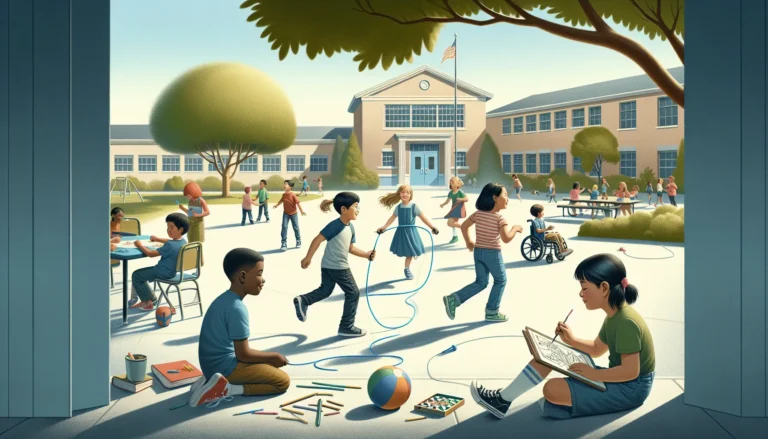In a world where traditional education often feels like a never-ending game of “sit still and listen,” alternate schools swoop in like superheroes, offering fresh approaches that cater to diverse learning styles. These innovative institutions break the mold, providing students with unique environments where creativity thrives and individuality is celebrated. If you think school is just about textbooks and tests, think again!
Table of Contents
ToggleOverview Of Alternate Schools
Alternate schools provide unique educational opportunities not typically found in traditional settings. These institutions emphasize individualized learning and creative expression. Students engage in hands-on activities that encourage critical thinking and problem-solving.
Different methods define alternate schools, such as Montessori, Waldorf, and experiential learning models. Each method caters to diverse needs, allowing students to thrive according to their strengths. Flexibility in curriculum design often accommodates varying learning paces, resulting in a more personalized educational experience.
Supportive environments characterize alternate schools, promoting social-emotional growth. Trusting relationships between teachers and students enhance engagement. Peer collaboration and group projects underline the importance of teamwork and communication skills.
Evidence shows that alternate schools contribute to higher student satisfaction rates than traditional schooling. Research indicates that students in these settings score similarly or better on standardized assessments. Many graduates from alternate schools report feeling better prepared for real-world challenges.
In essence, alternate schools create structures that empower learners and promote intrinsic motivation. They redefine success beyond academic achievement, focusing instead on holistic development. Flexibility in scheduling and teaching styles fosters a supportive atmosphere where every learner can flourish.
Benefits Of Alternate Schools

Alternate schools offer numerous advantages catering to diverse student needs. These benefits enhance the educational landscape beyond traditional approaches.
Personalized Learning Approaches
Personalized learning approaches lead to student engagement and success. Customized curricula align with individual strengths and interests. Flexibility in pacing allows learners to progress at their own speed. Hands-on activities encourage creativity while fostering critical thinking skills. Various educational models, such as Montessori and Waldorf, cater to distinct learning styles. Teachers provide tailored support that nurtures each student’s potential. Ultimately, this individualized focus cultivates a more effective learning environment.
Support For At-Risk Students
Support for at-risk students thrives within alternate school settings. Smaller class sizes foster close relationships between teachers and students. These relationships create safe spaces where students feel valued and understood. Specialized programs address unique needs that traditional systems often overlook. Additionally, emotional and social support systems promote resilience and confidence. This inclusive atmosphere aids in reducing dropout rates and enhancing academic performance. Research shows that students from alternate schools often demonstrate improved outcomes compared to their peers in conventional environments.
Types Of Alternate Schools
Alternate schools encompass several innovative educational models designed to cater to diverse learning styles. Each type fosters unique approaches that enhance student engagement and success.
Charter Schools
Charter schools operate independently of traditional school districts, providing flexibility in curriculum and teaching methods. These institutions often focus on specific educational philosophies or themes, such as STEM or arts integration. Students may benefit from smaller class sizes, enabling personalized attention and support. Many charter schools emphasize community involvement, fostering a sense of belonging and shared responsibility among families and educators. Research indicates that students in charter schools often achieve comparable or improved academic outcomes compared to their peers in traditional schools.
Montessori Schools
Montessori schools emphasize self-directed learning within a structured environment. Materials in these classrooms promote hands-on exploration and promote critical thinking skills. Students of various ages often learn together, encouraging peer mentorship and collaboration. Teachers serve as guides rather than traditional instructors, allowing each child to progress at their own pace. Evidence suggests that Montessori graduates frequently excel in creative problem-solving and interpersonal skills, preparing them well for future academic and professional challenges.
Online Schools
Online schools provide flexible learning options for students who may thrive in a virtual environment. Curriculum delivery occurs through digital platforms, allowing learners to study at home or anywhere with internet access. These institutions often offer a range of courses, including advanced placement and specialized subjects tailored to individual interests. Engaging with teachers through live sessions and interactive assignments fosters a sense of community and connection among students. Many families choose online schools for their personalized approach, which can result in improved academic performance and satisfaction.
Challenges Faced By Alternate Schools
Alternate schools encounter significant challenges that can hinder their progress and effectiveness.
Funding Issues
Funding issues often plague alternate schools, as they rely on a mix of public and private sources. Many struggle to secure steady financial support, leading to resources being stretched thin. Budget constraints may result in inadequate facilities and limited educational materials. Some alternate schools operate as charter entities, which can face unpredictable funding from state and local governments. Insufficient funding also impacts staff hiring, limiting the ability to attract qualified educators. Without stable financial backing, these schools cannot fully realize their innovative educational models.
Public Perception
Public perception poses another challenge for alternate schools, which often battle misconceptions about their effectiveness. Many individuals associate alternative educational models with lower academic standards due to the lack of familiarity with diverse approaches. Skepticism around their methodologies can lead to a reluctance in enrollment from prospective students. Media portrayal might further influence public sentiment, emphasizing negative aspects while overlooking successes. Educators continue to work on raising awareness about the benefits and achievements of alternate schools to shift these perceptions and attract wider support.
Conclusion
Alternate schools represent a transformative shift in education that prioritizes individual learning needs and fosters creativity. By embracing diverse teaching methods and supportive environments, these institutions empower students to thrive academically and personally.
Despite challenges like funding and public perception, the benefits of alternate schools are evident in their ability to engage students and prepare them for real-world challenges. As awareness of their effectiveness grows, alternate schools are likely to play an increasingly vital role in shaping the future of education. Emphasizing holistic development over traditional metrics of success, they pave the way for a more inclusive and enriching educational landscape.




